Walking, Guiding and Practise
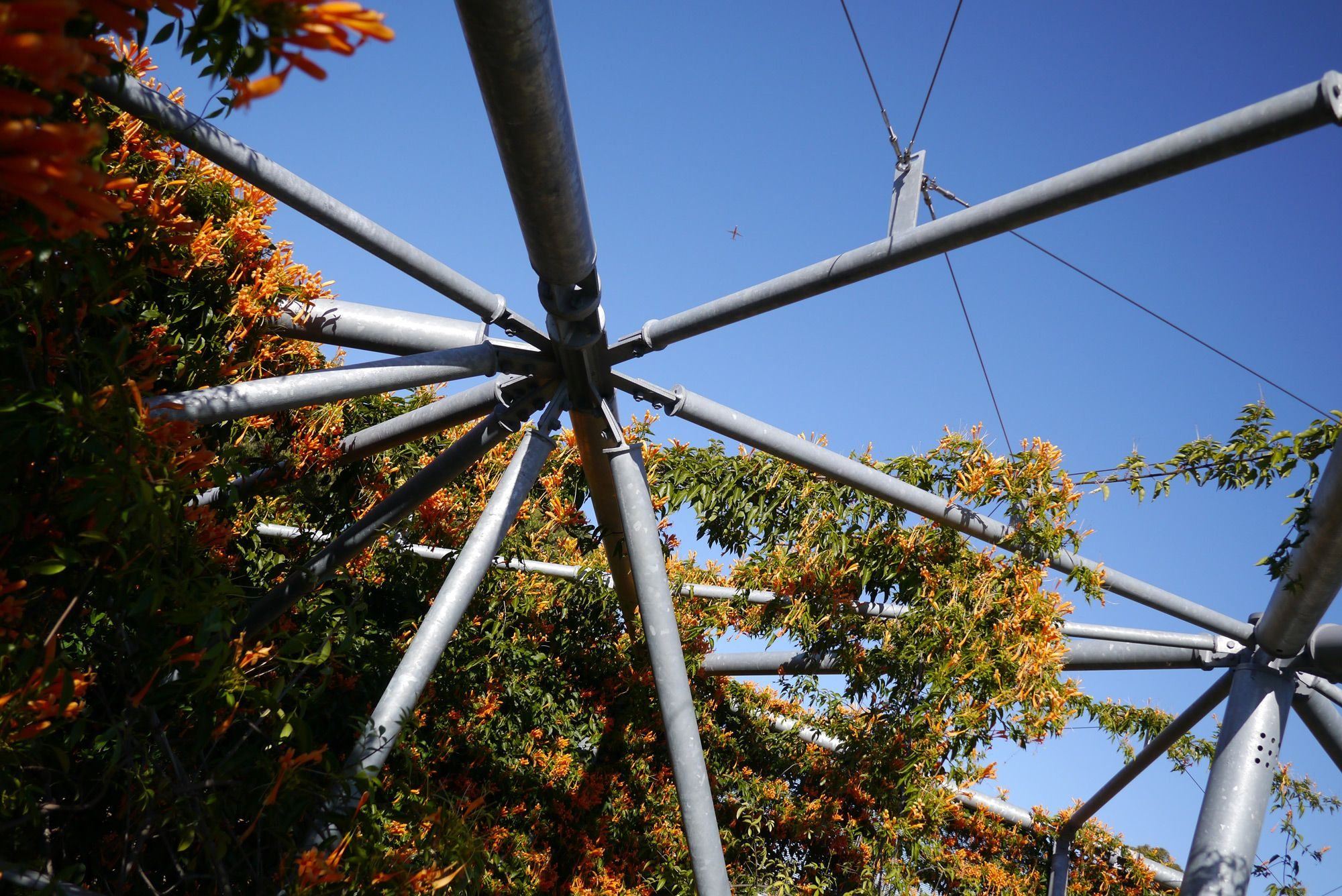
As an architect who guides, I often frame the tours we do as a kind of public research project; the public side of a private practice. But this is disingenuous and devalues the contribution guiding makes to practise. So how does guiding relate to practise; how does guiding sharpen our work as architects?
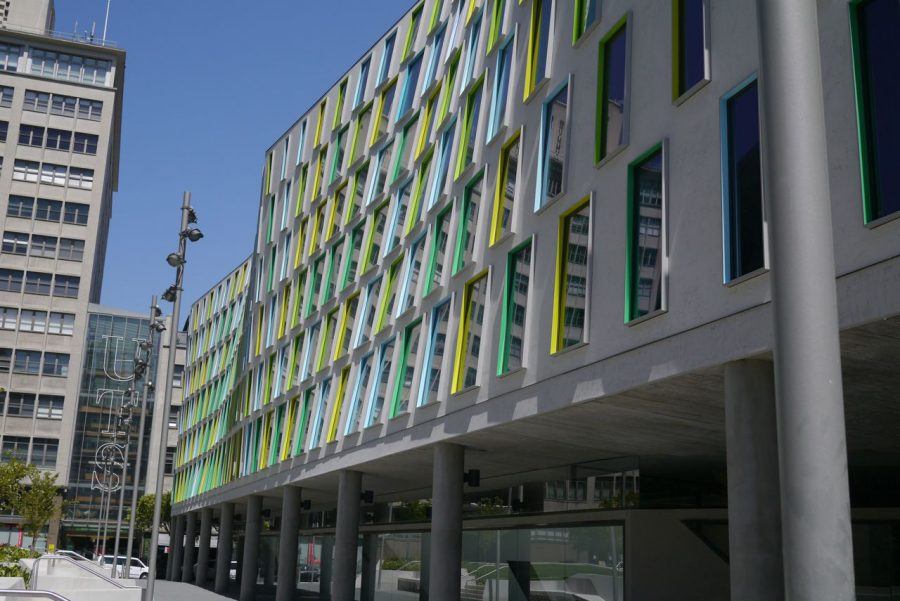
Thomas Street, University of Technology Sydney by local architects Durbach Block Jaggers – AUTHOR: Eoghan Lewis
The architect understands the why and the how of a city. We operate in a world where money, politics and culture intersect and understand the myriad, often conflicting forces that give a city form. As generalists in a process dominated by specialists – a bit like the director of a film or conductor of an orchestra – the architect must appreciate all disciplines whilst remaining master of none. By necessity, the architect must be a formidable communicator as it is through drawings, models and words that our vision is communicated. We know that lines and words have consequence so need to be used economically.
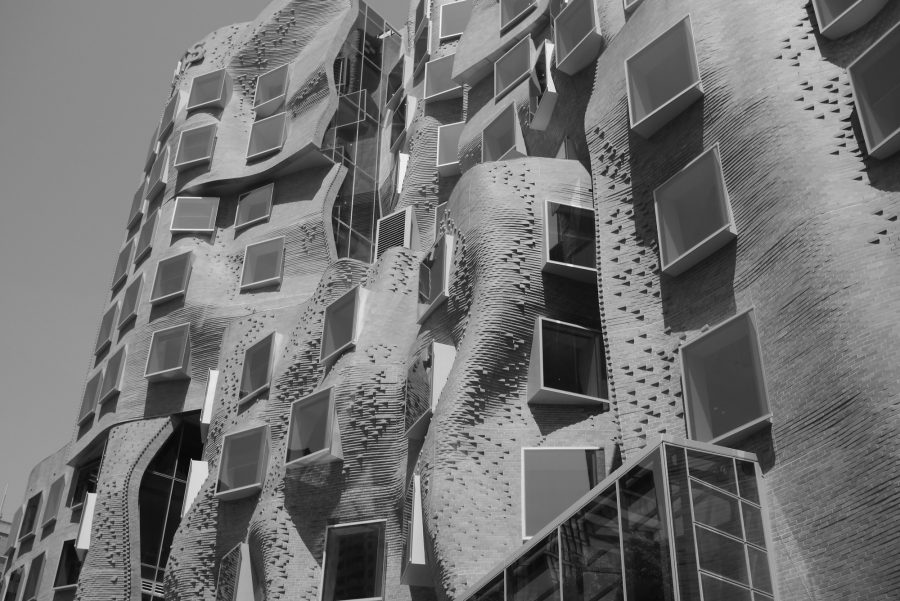
Dr Chau Chak Wing building, University of Technology Sydney by Frank Gehry – AUTHOR: Eoghan Lewis
And then there is narrative; narrative in the sense that every good project is trying to say something and relate to its context, program and purpose in a particular way. There is a precision to thought and its manifestation, so architect as guide and city whisperer is a perfect fit as we are best placed to share a city’s hidden narrative.
But how does guiding inform practise?
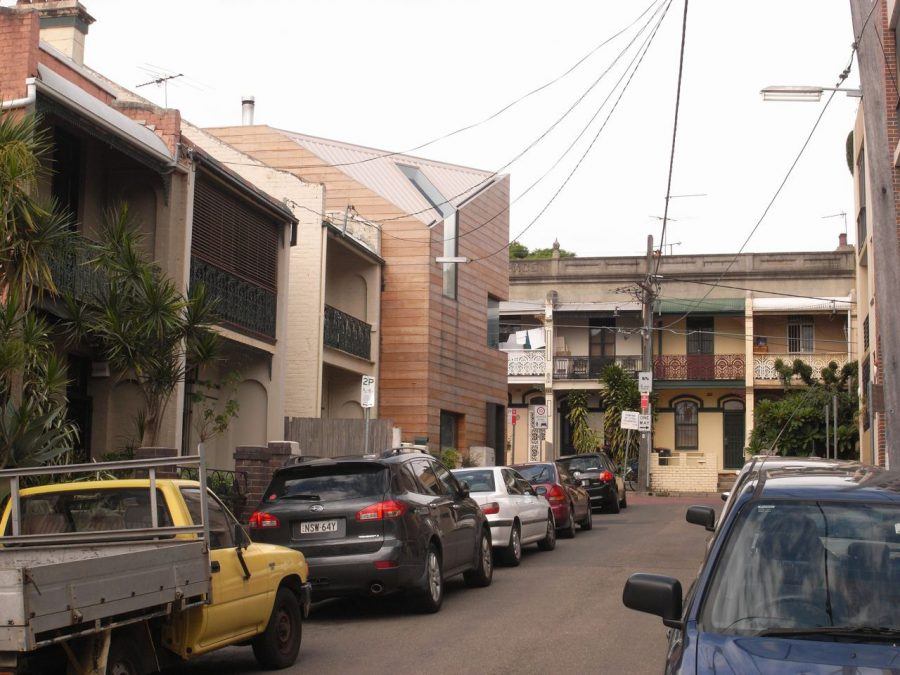
Stirling House by local architect Andy Macdonald – AUTHOR: Eoghan Lewis
Tours have a clear conceptual and geographic structure but they are also iterative, thematic threads emerging over time. Each tour is an exercise in storytelling; there are heroes and villains, there is a beginning, middle and an end, there is humour too and all these devices help bring the facades to life, quietly revealing their hidden agendas. Guiding is a practise whereby the art of looking, engaging and communicating through public spaces in real time sharpens your eye.
The interconnected nature of politics, culture, economy and environment becomes more apparent over time, architecture acting as signifier of the vibrant ideas and forces that push and pull at Sydney like its tides. One understands but also feels that architecture is not just about stuff and the space between that stuff. No; architecture is about creating meaningful places for people to work, rest and play.
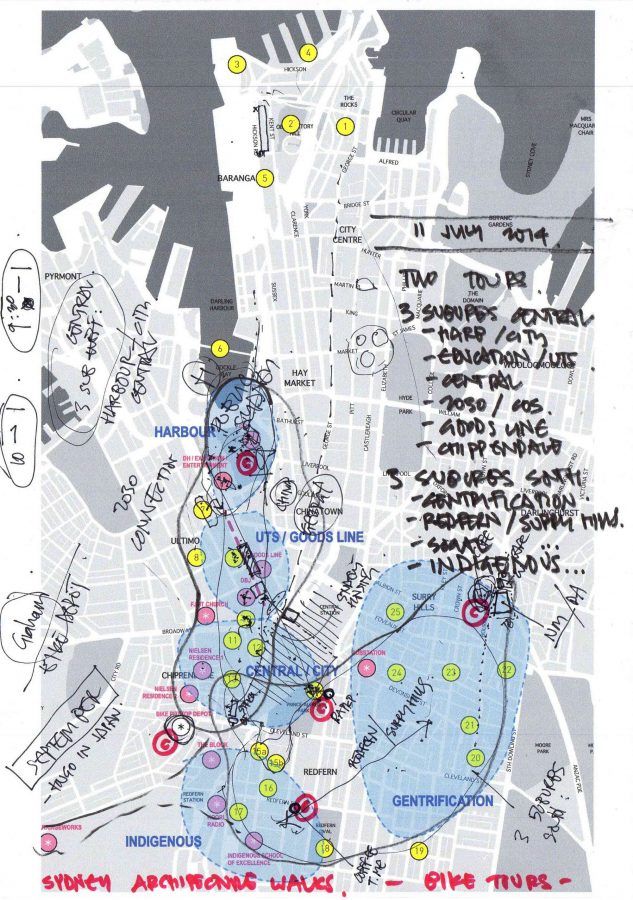
Workshopping a new bicycle tour – AUTHOR: Eoghan Lewis
As prominent critic Elizabeth Farrelly says; we made the city, we didn’t find it. So, a city and a city’s architecture reveal who, what and why we are.
For the architect, guiding is a natural extension of the way we’re taught to view the world. In turn, guiding is a form of iterative research that sharpens and fuels the practise of architecture.
Text by Eoghan Lewis. More information in Sydney Architecture Walks






No Comments